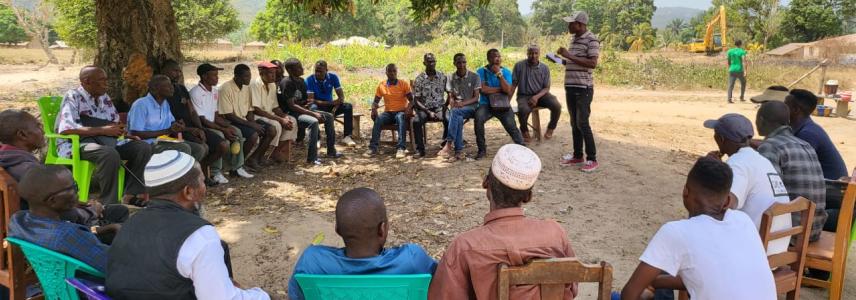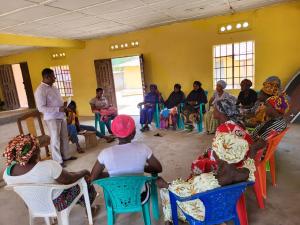Combatting child labour through awareness training

The United Nations (UN) want to end all forms of child labour by 2025. Around 1.8 million children work in West Africa’s cocoa industry. CBI addresses this issue through child labour awareness training courses in Sierra Leone and Liberia. Prince Gyamfi is a trainer of the International Cocoa Initiative (ICI). He says, “Eliminating child labour is a shared responsibility between all industries.”
CBI’s Cocoa Mano River Union project aims to develop an inclusive and sustainable cocoa value chain in Sierra Leone and Liberia. This includes child labour awareness training in cooperation with ICI. The training deals with issues from children’s rights and labour conditions to community involvement. Prince says, “I gave the first training to 8 local people from Sierra Leone and Liberia. They work for governments, the private sector and as independent consultants. Increasing understanding and awareness is the first step towards ending child labour.”
Recognising child labour
One of the trainees is Peter KY Johnson from Liberia. He works as a technician and chief coordinator for cocoa development at Vainga Agriculture Development and Management Consultancy (VADEMCO). “I learnt many new things,” Peter says. “One of them is how to recognise child labour. Children helping their parents with household chores is normal. This is called child work. Child labour is when work hinders their development and school work or is dangerous.”
Cultural and financial challenges
“On our journey to stop child labour, we face different challenges,” Prince explains. “Traditionally, many parents believe their children are there to help them. Other factors also make them keep their children on the farm. For example, many Sierra Leonese and Liberian schools do not have professional teachers. Moreover, many farmers do not have enough income from the seasonal cocoa harvest.” Peter experiences the same, “Many small cocoa farmers cannot afford to hire workers. So they use their children for farming activities. This stops children from going to school and is dangerous.”
Child labour assessments

Peter now provides assessments to help identify cases of child labour. These include questions about the children’s age, place of work, safety conditions and the number of working hours. “So far, the response is positive but mixed,” Peter says. “It needs more cross-sector cooperation and partnerships. One solution is the centralised processing of cocoa beans. This will increase the quality and raise the income of farmers.”
Monitoring and remediation
The final step is monitoring and reducing known cases of child labour. Peter and his colleagues use a Child Labour Monitoring and Remediation System (CLMRS). It helps find alternative solutions and ultimately end child labour cases. This requires the cooperation of all parties involved in the supply chain. Child labour can take place at home or on other farms. But, we also know of cases of human trafficking.
Further action against child labour
Commitment to end child labour is increasing. In May 2022, the South African government hosted the Fifth Global Conference on the Elimination of Child Labour. But, there is still a long way to go. “As a follow-up, we will organise another training session in the second half of 2022,” Prince says. “This will include more people from companies and governments. I hope this will help end child labour one day.”